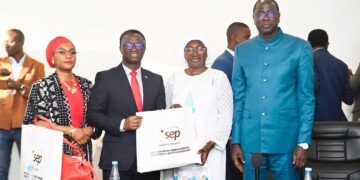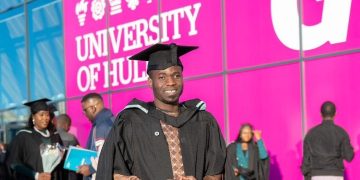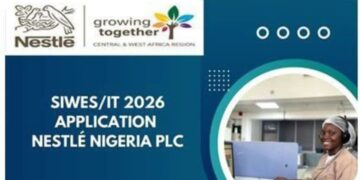
So you walk into a classroom that is seemingly a learning utopia. The teacher is loved and appreciated by all students. The teacher is well-known for their engaging teaching practices and creativity. There is a buzz – and it’s not just from the students. You notice a melodic symphony of Mozart’s classical pieces playing harmoniously in the background as students busily work on tasks. Students even choose their activities based on whether they are right or left brained. Left brained students are diligently working on solving logical puzzles and right brained students are painting using an array of vibrant colors. When you ask the students why they work with this music, they smile. They cheerfully explain that the music being played in class is there to enhance their brain development.
If you felt like you were caught in a fantasy for a moment – well, you may have been. It’s not the common practice you may see each day. And to add to the fantastical element, let’s imagine that this teacher confidently asserts their pedagogical choices by explaining that The Mozart effect and designing activities for left brain versus right brain learners builds intelligence. Auditory students are given podcasts to listen to, while her visual students watch video clips, and the bodily-kinesthetic students engage in role plays.
It sounds like this teacher is almost too good to be true. Clearly, they have this ‘brain stuff’ all figured out. Well, not quite. Believe it or not, these beliefs that this teacher holds are actually myths – neuromyths, to be precise.
What’s a Neuromyth?
Neuromyths are common misconceptions that society holds about the brain and how it functions. Old wives tales, if you like. Some of these misconceptions can be based on real scientific research but also misinterpret the actual findings, becoming ‘hearsay’. Current neuroscience research has found that on average when provided with various unbacked statements about the brain and learning, teachers actually believed 49% of the neuromyths. That means that on average, almost half of the beliefs that teachers hold about learning and the brain are not based on research. A little alarming, since we call ourselves educators, right?
According to the OECD’s Brain and Learning project (2002) neuromyths held by teachers can negatively influence educational practices and directly impact student learning. It is critical that educators can identify common neuromyths and reflect on their own teaching practice to ensure that they are not engaging in instructional practices that are based on neuromyths. So, educational leaders, it’s our duty to provide professional development and training for teachers on current neuroscience. Why? Because as educators we also need to understand how the function of one’s brain has direct implications on teaching and learning.
What are ways in which we can properly prepare our teachers?
It’s important that we expose teachers to common neuromyths and also quash them. Some commonly held neuromyths are:
We only use 10% of our brains. Yep, that’s an old one and very much a fixed mindset ideology. Instead, teachers should be taught about neuroplasticity and how our brain is made up of billions of neural connections. The more we use a neural pathway the stronger it becomes – muscle memory!
Students are either right-brained (more creative) or left-brained (more analytical): Once again – this is a fixed approach to learning. Our brains are complex and when engaging in cognitive tasks we engage both of our spheres, not just one.
Mozart Effect: The belief that listening to classical music; especially Mozart, will increase a child’s intelligence. Yes, music is a great tool for building different connections in the brain, or can be a tool for focus, but by simply listening to music students are not building any intellectual capacity. Be warned: students will try to tell you otherwise!
Learning Styles are fixed in students. While we all have learning preferences, this does not mean that they are fixed, nor does it mean that is the only way that a student can learn. Teachers should encourage students to learn using multiple learning styles and to build on a learning style that is not their preference.
Schools and universities can:
Train teachers in evidence-based teaching practices such as growth mindset, formative assessment, and metacognition. Each of these practices encourages students to view learning as a process, reflect on their own learning journey,and use assessment feedback to improve. Your brain is a muscle and you can grow it by exercising it. This means that when you face an obstacle or a difficult task, working to overcome this challenge will build stronger connections in your brain; which leads to learning!
Bridge the gap between theory and practice. Have teachers read current research from neuroscientific studies – a great way to do this is in teacher teams. Teachers should then actively engage in reading circles to discuss the current research and implications for their teaching practice. This practice will also foster collaboration amongst colleagues and encourage teachers to take ownership of their own professional development.
Want more tips on how to best prepare your teachers with the most current neuroscience research? Get in touch. Head to www.edvanceconsultants.com
_______________________________ Stephanie Martin Hailing from South Africa and Australia, Stephanie is the co-founder of Edvance Education Consultants and has over 10 years of experience as an educator and thought leader in the education profession - both in Australian and international school systems. As an educator in universities and schools, Stephanie focuses on building and sustaining high quality pedagogical practices to enhance teaching and learning, as well assisting organisations to implement assessment methods that foster 21st century skills. Stephanie is a published co-author, researcher and a dynamic keynote speaker. Dr Afnan Boutrid Dr Afnan Boutrid (Ed.D), an AlgerianAmerican is the co-founder of Edvance Education Consultants and a practising Assistant Professor in academia with a wealth of experience in the education profession, both in the United States and Middle East region. Afnan specialises in curriculum design, assessment and culturally responsive teaching practices and is an active researcher, lead author and lecturer in Dubai, UAE. As a thriving researcher, Afnan believes in the power of bridging the gap between theory and practice, ultimately bringing change and empowerment to the field of education. @edvanceconsultants info@edvanceconsultants.com.














































































 EduTimes Africa, a product of Education Times Africa, is a magazine publication that aims to lend its support to close the yawning gap in Africa's educational development.
EduTimes Africa, a product of Education Times Africa, is a magazine publication that aims to lend its support to close the yawning gap in Africa's educational development.

